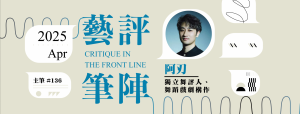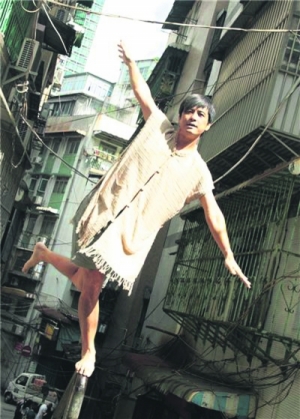Szymanowski Quartet, a Polish string ensemble, tours Asia in April. The quartet’s name pays an obvious homage to the great composer of their nation. Members include Agata Szymczewska (violin), Grzegorz Kotow (violin), Volodia Mykytka (viola), and Marcin Sieniawski (cello). The programme this night was rich and diverse, including works by Joseph Haydn, two twentieth century Polish works by Grażyna Bacewicz and Karol Szymanowski, and four new works by local composers.
The concert commenced with a light-hearted piece by Haydn: String Quartet in E-flat major, op. 33, No. 2, “The Joke”. The three-beat Scherzo was precisely punctuated. The dynamic and bow speed were well controlled, which were pretty authentic in style. The trio theme in the first violin part featured glissandi on the first to second crotchet beats, which was a conventional interpretation. The glissandi were executed with highest degree of care. Each slide was elegantly justified, where garnishing fade-outs were heard after every glissando. Its resonance and decay, as extra pieces of embellishments, were nicely captured and effectively enhanced in the concert hall. The resulting sonority was one of the most impressive and remarkable I have ever heard in this beautifully constructed hall. Kotow, in his speech after the intermission, also highly praised the acoustic design of the Grand Hall.
Largo opened with duo passage on viola and cello, succeeded by first and second violin. These two passages demonstrated great balance and clarity in timbre, as if the sounds were produced from a single instrument. The same kind of “unified” sonority was heard once again in the chordal section before the final statement. The presto rondo, unlike other usual interpretations that tend to adhere to a straightforward tempo, featured a more flexible and rubato tempo. Kotow skilfully manipulated the tempo and led the music for every single breath. Other members followed closely, fully displaying the ensemble’s rapport.
The Classical piece was then followed by a new work, namely Encounter by local rising composer Daniel Ting-cheung Lo. Short and brittle gestures of sul ponticelli, behind bridge sonorities, tremolos, dominated the opening of the piece. The quartet handled these pointillistic materials with great precision, creating a vibrant and compact sonic web. The economical use of materials eventually led into fragments of Szymanowski’s String Quartet No. 2. A section of extensive glissandi featured further intervention of folkloric materials. The quartet managed well on these alternating idioms.
After hearing the Szymanowski-inspired work, Szymanowski’s Nocturne and Tarantella, Op. 28 concluded the first half of concert. Agata Szymczewska, swapped with Kotow and took up the soloistic role. This exotic piece was originally written for violin and piano. It displayed influences from Spanish, middle-Eastern, and Mediterranean regions. The string quartet version heard tonight was arranged by Myroslav Skoryk. The string quartet version added an extra hint of exoticness in the nocturne through the use of mutes on strings. The opening pizzicati in fifth on the viola and cello part were idiomatic in capturing the folkloric gestures. Szymczewska displayed the passages of artificial harmonics with fluidity. The nocturne section alternated several times back and forth, between slow and fast. The quartet was able to managed well in conveying these swinging moods. The Hispanic-sounding tarantella displayed Szymczewska’s virtuosity fully. The ensemble performed moderately so not to hinder the soloistic voice. Personally would prefer the original score by Szymanowski, where the solo violin could stand out even more in terms of timbre.
Three female HKU composers were featured consecutively after the intermission. In Search of Lost Time by Sze-rok Chan was heard. The famous Korean nursery rhyme The Little White Boat was heard on the cello part throughout. It was juxtaposed against the pointillistic dissonants on other strings. Sieniawski, the cellist, managed well to maintain his otherworldly part. He successfully separated his part against the others, creating a surrealistic picture, which portrayed the composer’s concern on the local town’s political unsettlements. High harmonics ended the piece, as if Chan threw an unresolved and unanswered question musically to the audience, which remained lingering on the audiences’ mind.
Followed by Kiko Li-tang Shao’s Harmony that featured a five-note chromatic motive which built up to the climax. The post-romantic idioms posed no difficulties to the players, where the quartet achieved these with ease.
The fourth composition premiered, written by Dr. Joyce Wai-chung Tang, utilised two prominent motives from the finale of Bacewicz’s Piano Quintet No. 1. Tang manipulated them in a cleverly designed way, and the choice showed her wisdom in selecting materials. Her decision allowed the string quartet to display their full glamour through their familiar language in Bacewicz’s music and Polish idioms. The resultant was an energetic and compact miniature, displaying and developing the motives to the greatest extent, hence titling as The Bacewicz Obsession. It also served a great preview to Bacewicz’s piece, which followed right after this miniature.
The programming was nicely paced and designed. The last composition was Bacewicz’s Piano Quintet No.1. Hence the timbre of piano remained fresh upon hearing. Dr. Mary Mei-loc Wu, an international acclaimed Hong Kong-based pianist, joined the ensemble as a guest artist. The French-hinted harmony, which possibly was influenced by Bacewicz’s teacher Nadia Boulanger, prevailed in the first movement. Wu, as an experienced interpreter of French works, marvellously added an extra bonus to the ensemble’s sonority, as one could hear in the first movement.
The Presto in second movement featured folksong-like themes, which resembled peasant dance. The tempo chosen was not as progressive as other interpretations. Nevertheless, the conservative choice had not failed to recreate the folkloric images. The crispiness of articulations was maintained on the piano, which had a leading role on introducing and sounding the tunes throughout. A downward glissando on piano across registers was heard near the end. It was articulated with bright sonority, and effectively led the movement into the final bit.
The harmonically complex Grave section was charged with deep emotions, where the ensemble sophisticatedly controlled the emotional relaxation and tension. An extensive passage of build-up featured a minor second ostinato in the piano part. Wu smoothly approached the figurations, and gradually brought out the build-up. At the same time, her part effectively supported the strings. The music was then reached the intense climax in the movement. The ensemble coordinated well in terms of dynamics and articulation, revealing the rooted sentiments from the harmonic turbulences in the climax. The sustaining and tranquil harmonics on violins, which were heard after the climax, brought the tension down. The Con passione finale were presented with fluency. With the preview of motives in Tang’s piece, the audiences could immediately hear the associations between the two compositions. Despite that the rehearsal time was pretty limited for the artists, they managed very well to coordinate with each other. Surely the local audience is much impressed by this fascinating performance.
Hong Kong as a cosmopolitan city has always encouraged the creative artists to be open-minded and diverse in their artistic languages. Katow praised that all the four new works displayed different approaches, which indeed reflected “the freedom to do different things.” Yet the unwillingness of many local players to try out contemporary idioms, and their lack of technical abilities, hinders and discourages the development of new music. The Szymanowski Quartet identifies such problem alike, and hence bears an important mission to discover new music. Katow showed his empathy towards the unwelcoming attitudes of audience and players towards new compositions, where he delivered in his speech, “Szymanowski had the same situation, no one want to play his music, it happens all the time to all great composers.” Classical repertoires are beautifully crafted and enjoyable upon listening. Katow continued to comment that many of the great composers were being ignored during their lifetime, and became famous only after they died, which were indeed a great pity. This is worth reminding the local players and audiences about their obligations and responsibility on promoting and accepting new works.
The Cultural Management Team of the University of Hong Kong did a great job in negotiating and bringing the quartet to the local audience. The concert was meaningful in several aspects, which facilitated intellectual and cultural exchanges. Also it had stimulated four new musical creations. The local audiences had a great chance to expose themselves to a great spectrum of repertoires. The choice of repertoire, being inclusive and representative, struck a perfect balance. Audiences experienced encounters between Classics and modernity, and the East and the West. The quartet, as a musical messenger, made these encounters across time and culture possible. Bacewitz and Szymanowski’s music was rarely heard, not only in Hong Kong, but also in other continents. Their music, as hidden gems, is yet to be discovered, promoted, and displayed to audiences worldwide. Szymanowski Quartet, as a highly promising ensemble, would be a warmly welcomed choice to be reheard again in local venues.
本網站內一切內容之版權均屬國際演藝評論家協會(香港分會)及原作者所有,未經本會及/或原作者書面同意,不得轉載。










